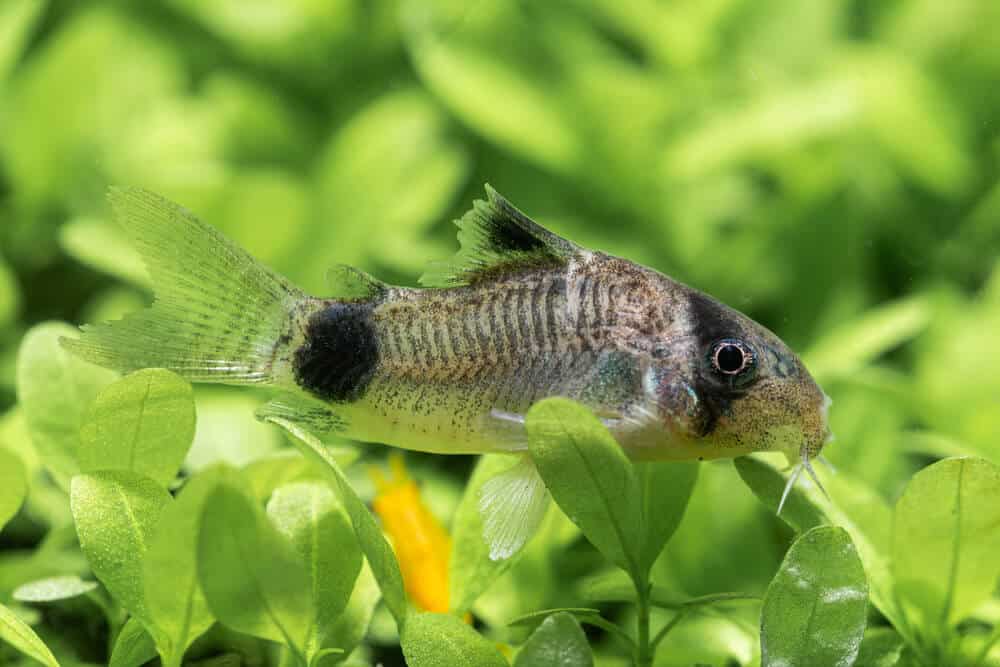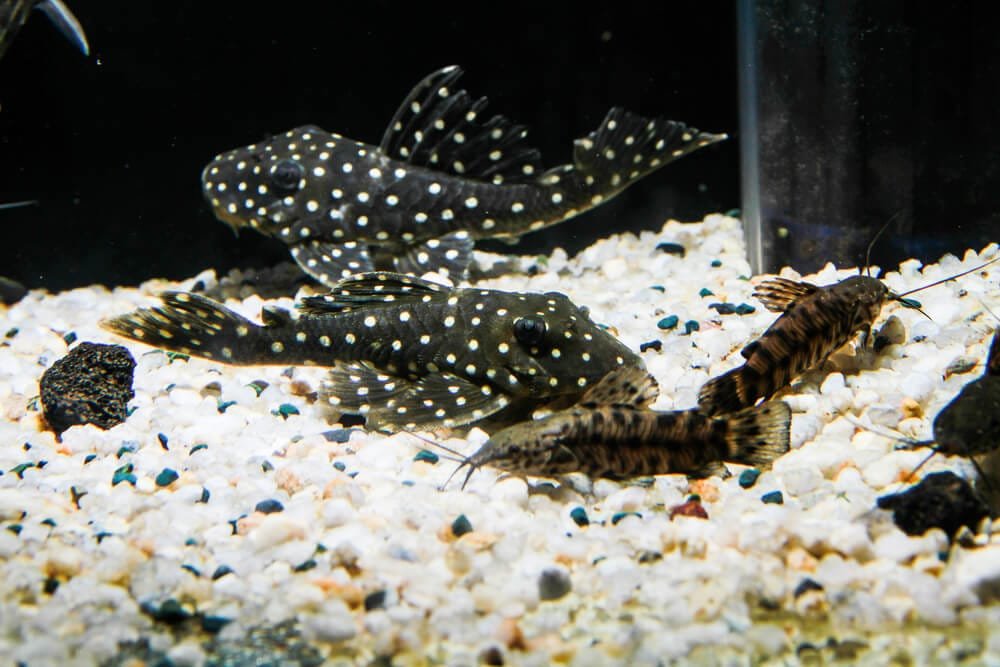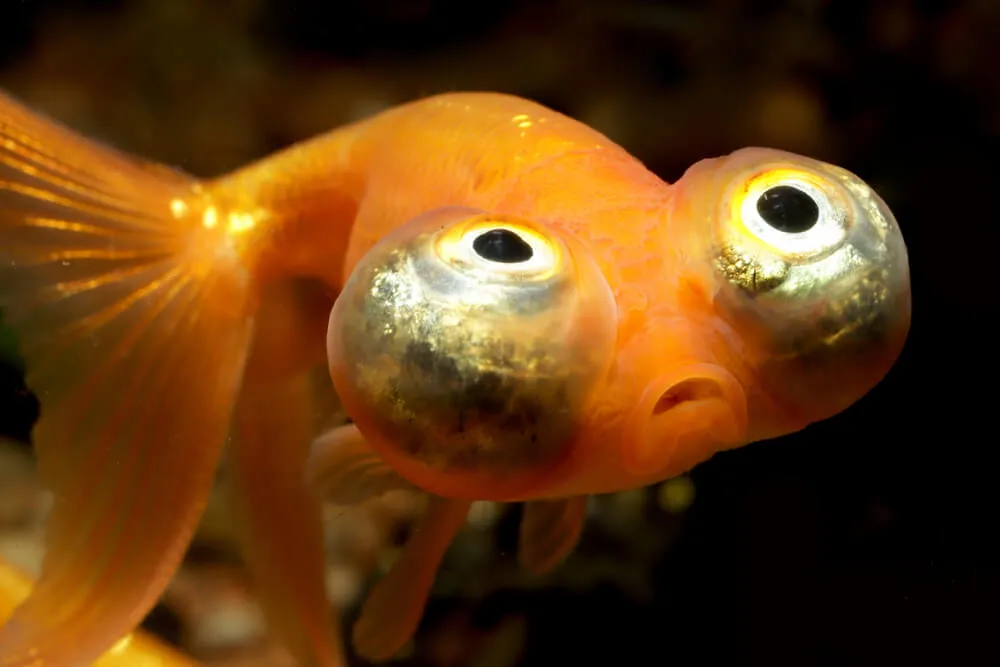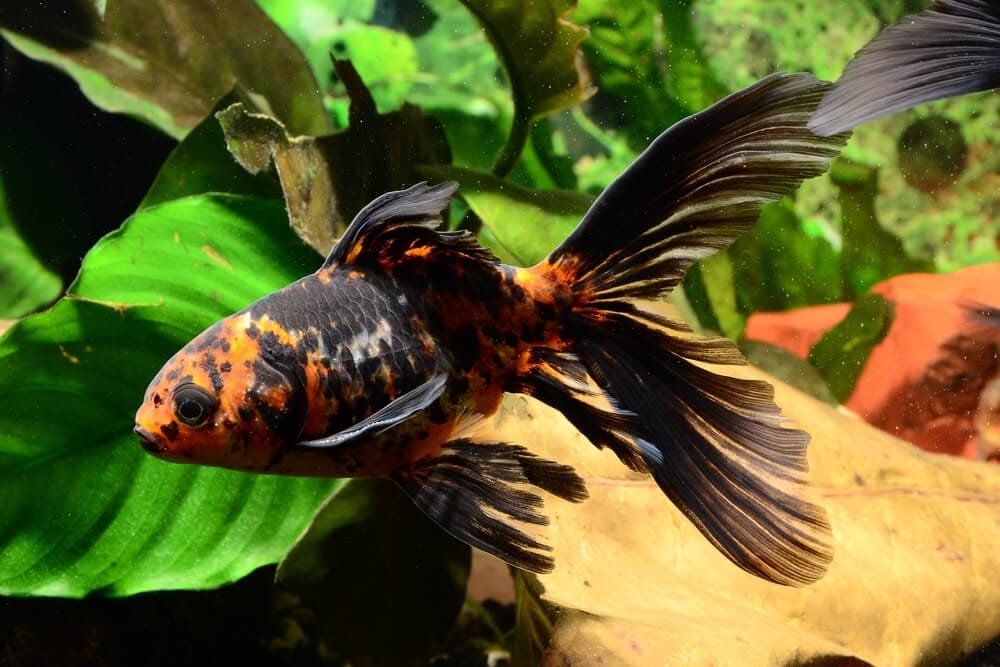How Do Betta Fish Breed?
Have you ever wondered how Betta fish breed? It’s a fascinating process that involves the male fish building a bubble nest, the female fish laying her eggs, and the male guarding the nest until the eggs hatch. In this article, we will explore the intricate world of Betta fish breeding and unravel the secrets behind this natural phenomenon. Get ready to dive into the mesmerizing world of these beautiful aquatic creatures and discover how they bring forth new life.
Habits and Biological Characteristics of Betta Fish
Natural habitat of Betta fish
Betta fish, also known as Siamese fighting fish, originate from the rice paddy fields and slow-moving waters of Southeast Asia. Their natural habitat consists of warm, shallow waters with dense vegetation, such as rivers, streams, and ponds. These labyrinth fish have adapted to survive in oxygen-poor environments by developing a specialized organ called the labyrinth organ, which allows them to breathe air from the water’s surface.
Physical characteristics of Betta fish
Betta fish are known for their vibrant colors and large, flowing fins. They have an elongated body shape and can grow up to three inches in length, depending on the variety. These fish display a range of colors, including shades of blue, red, purple, green, and yellow. Some varieties even exhibit iridescent or metallic scales, enhancing their visual appeal.
Reproductive behaviors of Betta fish
Betta fish are known for their unique reproductive behaviors. During the breeding season, male and female Bettas engage in a courtship process before spawning. This process involves various displays of aggression, territorial establishment, and nest preparation. The male Betta builds a bubble nest at the water’s surface as a crucial component of their reproductive behavior. Once the eggs are laid and fertilized, the male takes on the role of protecting and caring for the developing eggs until they hatch.
Triggers for Breeding
Environmental conditions
To trigger the breeding behavior in Betta fish, certain environmental conditions must be met. They require warm water temperatures ranging from 78 to 80 degrees Fahrenheit. Additionally, a consistent photoperiod with 12 to 14 hours of light each day is necessary to stimulate breeding behavior. Providing ample hiding spots and plants in the aquarium mimics their natural habitat, creating a comfortable environment for breeding.
Water quality and temperature
Maintaining optimal water quality and temperature is crucial for successful Betta fish breeding. The water should be clean, well-filtered, and free from harmful chemicals or pollutants. Regular water changes and the use of a water conditioner to remove chlorine and chloramine are essential. Keeping the water temperature stable within the recommended range ensures optimal conditions for breeding.
Introducing male and female Betta fish
When breeding Betta fish, it is important to introduce the male and female carefully to minimize aggression and ensure successful courtship. Before introducing them, it is advisable to place the male and female in separate tanks for a few days, allowing them to familiarize themselves with each other’s presence without physical contact. When ready for introduction, carefully release the female into the male’s tank and observe their behavior closely to ensure compatibility.
The Courtship Process
Establishing territory by the male Betta
The male Betta establishes his territory by selecting a suitable nesting site and defending it fiercely. He becomes highly territorial, displaying aggressive behavior towards other fish, including the female. The male becomes highly attentive to his surroundings and guards his chosen area, ensuring that no intruders enter his territory.
Flaring and displaying fins
During the courtship process, the male Betta displays his vibrant fins and intense colors. He flares his fins to appear larger and more attractive to the female. This behavior is an essential part of the courtship ritual and is intended to impress and attract the female Betta.
Bubble nest construction
One of the significant courtship behaviors of male Betta fish is the construction of a bubble nest. Using bubbles created by blowing air through his gills, the male builds a floating nest at the water’s surface. The nest serves as a safe place for the eggs to develop and provides suitable conditions for their survival.
Female’s role in the courtship
The female Betta’s role in the courtship process involves responding to the male’s displays of aggression and fin displays. She assesses the male’s fitness as a potential partner by observing his behavior and the quality of his nest. The female may also display signs of encouragement, such as vertical stripes or submissive behavior, to indicate her readiness to spawn.
Spawning embrace
Once the male and female Betta fish are fully engaged in the courtship process, they perform a spawning embrace where the female releases her eggs, and the male fertilizes them. This embrace consists of the male wrapping his body around the female to encourage the release of eggs. The male then collects the eggs and carries them up to the bubble nest, where he carefully deposits them for incubation.
Egg Development and Care
The role of the male Betta in caring for eggs
After the eggs are deposited in the bubble nest, the male Betta assumes the responsibility of caring for them. He guards, fans, and removes any rotten or infertile eggs to ensure the survival of the remaining ones. The male Betta also carefully tends to the floating nest, regulating the temperature and oxygen levels to promote healthy egg development.
Egg incubation period
The incubation period for Betta fish eggs typically ranges from 24 to 48 hours, depending on water conditions and temperature. During this time, the male Betta remains vigilant, guarding the nest and fanning the eggs with his fins to provide a constant flow of oxygen.
Protective bubble nest
The bubble nest serves as a protective barrier for the developing eggs. It keeps them separated from the rest of the tank and shields them from potential predators. The male Betta continuously monitors and reinforces the bubble nest, repairing and adding bubbles as needed to ensure its structural integrity.
Male’s aggression towards intruders
During the egg development period, the male Betta becomes highly aggressive towards any potential threats to the nest. He may attack other fish or even his own reflection, mistaking it for a rival male. It is crucial to keep the tank environment calm and free from stressors to prevent the male Betta from becoming overly aggressive towards the developing eggs.
Hatching and Fry Care
Hatching of Betta fish eggs
After the incubation period, the Betta fish eggs begin to hatch. The fry, or baby Bettas, emerge from the eggs, entering the hatching stage. The hatching process can take up to 48 hours, and it is essential to maintain stable water conditions to support the fry’s survival during this critical stage.
Transition to free swimming stage
Once hatched, the fry will transition from being attached to the bubble nest to becoming free-swimming. At this stage, the fry will start exploring their surroundings and develop their ability to swim. It is important to ensure that the tank environment is well-maintained and free from strong currents to prevent the fry from being swept away.
Feeding the Betta fry
During the early stages of development, Betta fry feed on their yolk sacs. As they absorb the nutrients from the yolk sac, they gradually transition to feeding on infusoria, microscopic organisms found in the water. Eventually, they can be introduced to commercially available fry food formulated specifically for Betta fry.
Importance of water quality during this stage
Water quality plays a vital role in the growth and development of Betta fry. Clean and well-maintained water helps to prevent the buildup of harmful substances and reduces the risk of diseases. Regular water changes and a properly cycled tank are essential to ensure optimal water quality for the fry’s health and survival.
Separating the Fry
Reasons for separating the fry
Separating the fry from the adult Bettas is necessary to prevent aggressive behavior and potential predation. Adult Bettas may view the fry as competition or food, posing a threat to their survival. Separating the fry also facilitates the ease of monitoring their growth and providing appropriate care tailored to their specific needs.
Recommended equipment for separating
To separate the fry, a separate tank or container is needed. A small, well-filtered aquarium or a breeding net that allows water circulation and maintains appropriate water parameters is ideal. It is important to ensure that the separation tank is adequately sized to accommodate the growing fry.
Creating suitable fry rearing conditions
The separated tank should replicate the optimal conditions for the fry’s growth and development. This includes providing a warm water temperature, clean water, and adequate space for swimming. Adding live plants and hiding spots can also help reduce stress and provide a more natural environment for the fry.
Feeding schedule for the separated fry
It is crucial to establish a regular feeding schedule for the separated fry. Initially, they can be fed small amounts of infusoria or baby brine shrimp every few hours. As they grow, their diet can be gradually transitioned to finely crushed flakes or commercially available fry food. Ensuring a varied and nutritious diet is vital for their healthy growth and development.
Growth and Development
Factors influencing growth
Several factors can influence the growth of Betta fish, including genetics, nutrition, environmental conditions, and overall health. Providing a balanced diet, maintaining optimal water quality, and ensuring a stress-free environment are crucial for promoting healthy growth in Betta fish.
Changes in physical appearance
As Betta fish grow, they go through various changes in their physical appearance. Their fins may continue to develop and elongate, and their colors may become more vibrant and defined. These changes are influenced by genetic factors, the quality of their environment, and their overall health.
Size variation among Betta fish
There can be significant size variation among Betta fish, depending on the variety and genetic factors. Some varieties, known as the “giant” Betta fish, can grow up to six inches in length, while others may remain smaller in size. Proper care and nutrition play a role in maximizing their growth potential.
Development of coloration and finnage
The development of coloration and finnage in Betta fish is a fascinating aspect of their growth. As they mature, their colors intensify and become more vibrant. The shape and size of their fins evolve, showcasing the unique characteristics of each variety. Providing a balanced diet rich in carotenoids can help enhance the coloration of Betta fish.
Challenges and Troubleshooting
Infertility issues
Sometimes, Betta fish breeding attempts may result in infertility. This can occur due to genetic factors, poor health, or age-related issues. If breeding attempts consistently fail, it is advisable to consult a knowledgeable Betta fish breeder or veterinarian for guidance and assistance.
Aggressive behavior during breeding
Breeding Betta fish can be accompanied by aggressive behavior, particularly from the male Betta. He may become excessively aggressive towards the female, causing stress and potential harm. If aggression becomes a major concern, it is best to separate the fish and reassess their compatibility for breeding.
Failure of bubble nest construction
In some cases, the male Betta may fail to construct a bubble nest, leading to unsuccessful breeding attempts. This can occur due to various reasons, such as improper environmental conditions, lack of readiness from the male, or stress. Ensuring optimal water quality, a comfortable environment, and sufficient time for courtship can help encourage bubble nest construction.
Health problems in fry
Breeding Betta fish comes with the risk of potential health problems in the fry. Common issues include fin rot, bacterial infections, or swim bladder disorders. It is important to monitor the fry closely and seek appropriate veterinary care if any health concerns arise. Maintaining optimal water quality, providing a balanced diet, and minimizing stress can help prevent these health issues.
Breeding Varieties of Betta Fish
Different types of Betta fish
Betta fish come in various fascinating and beautiful varieties. Some popular types include the Veil Tail, Halfmoon, Crowntail, Plakat, and Double Tail. Each variety showcases unique characteristics, such as different fin shapes, color patterns, and body structures. Exploring the diverse world of Betta fish varieties can be a rewarding and enjoyable experience for breeders and enthusiasts.
Breeding techniques for specific varieties
Breeding techniques may vary depending on the specific variety of Betta fish being bred. Certain varieties, such as the Halfmoon or Crowntail, require careful selection and breeding of individuals with desirable fin shapes and characteristics. Understanding the breeding requirements and genetic traits of each variety is crucial for successful breeding outcomes.
Genetic traits and outcomes in breeding
Betta fish breeding involves considering the genetic traits and outcomes desired in the offspring. Breeders can select individuals with specific traits, such as vibrant colors, unique fin shapes, or patterns, to optimize the chances of producing offspring with desired characteristics. Understanding the basics of genetic inheritance and maintaining genetic diversity are vital for successful breeding projects.
Breeding for Desired Traits
Understanding genetic inheritance
To breed Betta fish for desired traits, it is important to have a basic understanding of genetic inheritance. Genes responsible for various traits, such as coloration or finnage, can be passed down from the parents to the offspring. By selectively breeding individuals with desirable traits, breeders can increase the likelihood of producing offspring with those traits.
Selective breeding methods
Selective breeding involves carefully selecting and pairing individuals with specific traits to create desired outcomes in the offspring. Breeders can use techniques such as line breeding, outcrossing, or inbreeding, depending on their breeding goals. Responsible breeding practices prioritize the health and well-being of the fish, while selectively focusing on desirable traits.
Breeding for specific colors and patterns
Breeding for specific colors and patterns in Betta fish can be an exciting endeavor. By selecting individuals with desired colors or patterns, breeders can increase the chances of producing offspring with those traits. Combining different color variations and patterns through selective breeding can result in unique and visually striking Betta fish.
Maintaining genetic diversity
Maintaining genetic diversity is essential for the long-term health and vitality of Betta fish populations. Inbreeding or excessive line breeding can lead to genetic weaknesses, reduced fertility, or compromised immune systems. Responsible breeders prioritize genetic diversity by introducing unrelated individuals into their breeding programs periodically.
Breeding Betta fish can be a rewarding and fulfilling experience for aquarists and fish enthusiasts. Understanding the natural habits, biological characteristics, and reproductive behaviors of Betta fish is essential for successful breeding projects. With proper care, attention to environmental conditions, and selective breeding methods, breeders can create beautiful and healthy Betta fish with desired traits, while contributing to the preservation and improvement of this captivating species.






